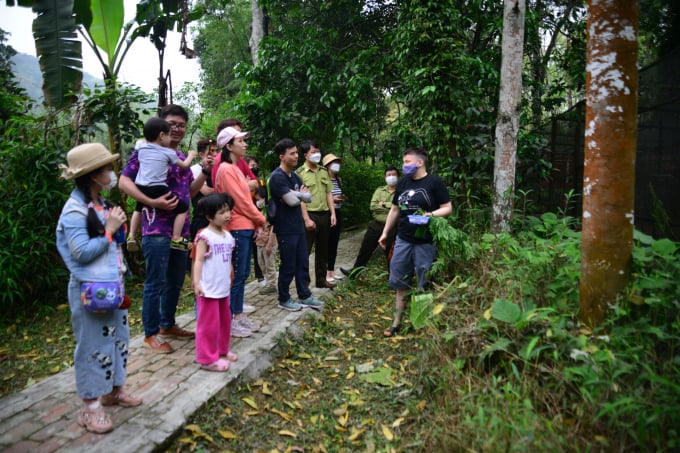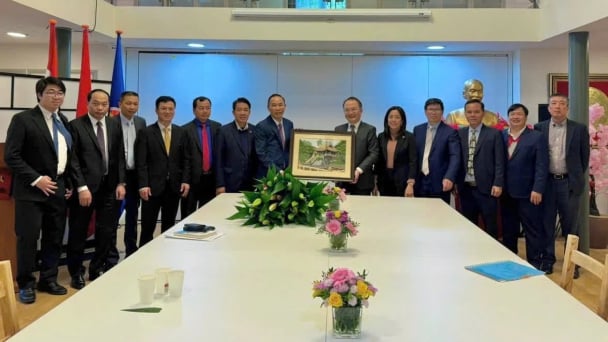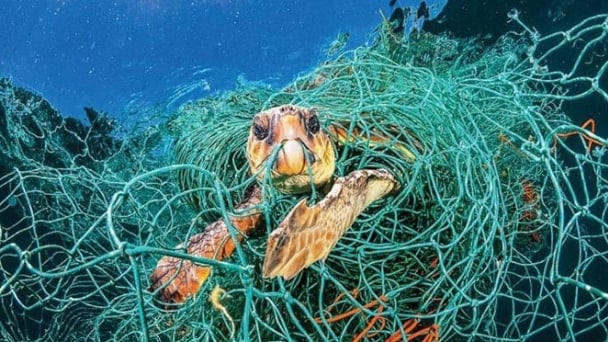June 17, 2025 | 01:18 GMT +7
June 17, 2025 | 01:18 GMT +7
Hotline: 0913.378.918
June 17, 2025 | 01:18 GMT +7
Hotline: 0913.378.918

Prof. Dr. Pham Van Dien - Deputy Director of the Vietnam Administration of Forestry. Photo: Bao Thang.
In 2022, Vietnam’s forestry sector aims to develop into an economic sector, focusing on diversifying forest revenue sources.
On the International Forest Day occasion on March 21, Prof. Dr. Pham Van Dien - Deputy Director of the Vietnam Administration of Forestry, discussed with the Vietnam Agriculture Newspaper about the future development orientation.
According to Prof. Dr. Pham Van Dien, diversification of revenue from forests is not a new direction. This idea has been around for a long time. Immediately after independence in 1946, hydro-forestry engineers came up with "forest modulation". Accordingly, forests need to be integrated and fully utilized, and capital for forests should be maintained continuously for a long time.
Today, the concept of "sustainable forest management" (proposed by the International Tropical Timber Organization - ITTO in 1990 and recognized by the Helsinki Conference in 1994) is no longer strange. In which diversification is content, referring to the abundance of aspects and criteria that the forest needs to meet; both indicate the convergence and meeting of these aspects and indicators when the forest meets the set requirements well.
What is new in the current period is the action. Vietnam is trying to realize the idea of diversifying income sources.
From the initial source of revenue from timber and firewood due to exploitation of natural forests, Vietnam has switched to closing natural forests, earning export value of wood and wood products from planted forests and imported timber reaching US$ 15.87 billion in 2021.
From the by-products, Vietnam now has the correct concept of non-timber forest products, with an export value of over US$ 600 million (in 2021) and continuing to increase.
Diversification of revenue from forests should be based on a solid foundation of sustainable forest management, associated with forestry socialization. Diversifying forest revenue can be spread in many areas, meeting the needs of many different markets, both domestic and foreign, direct and indirect, economic, social, and environmental, both in the short term and in the long term.
However, it is not possible to diversify income sources without diversifying inputs for forest protection and development. Forestry development under the market mechanism and international integration, sustainability, integration of multiple values is the forestry sector at a comprehensive level and higher than that of the diversification of income sources.
Revenue from forest environmental services has become a reality. Revenue from forest hydrology services will reach VND 3,115 billion (in 2021). Forest carbon sequestration and storage services are making good progress. It is expected that from 2022 to 2030, revenue from forest carbon services can reach several tens of millions of US$ per year. Trade surplus and foreign currency earnings are the bright spots of the forestry industry and should continue to be the direction in the coming time.
Prof. Dr. Pham Van Dien said that the Vietnam Administration of Forestry has responded and integrated the theme launched by FAO, "Forests and Sustainable Production and Consumption", in its direction and administration in 2022.
Over the past time, the direction and administration of the forestry sector have demonstrated the industry's development ideology, which is the sustainable development of Vietnam's forestry, towards the goal: Everyone benefits from the achievements of forest development.

Visitors at Cuc Phuong National Park. Photo: TL.
The theme launched by FAO is very suitable for the development direction of the forestry sector in Vietnam. The Vietnam Administration of Forestry supports this idea and has directed the implementation of many practical activities.
First of all, continue to protect, restore and develop forest capital; to maintain the forest cover rate at a stable level of 42 - 43% in the coming years; continue to adjust the structure of forest types in an appropriate direction; improve the quality of forests, ensuring the diversification of income sources associated with maintaining and enhancing the quality of forests, as well as improving the quality of forest ecosystem services. Improving forest quality based on a stable coverage ratio is a guiding content throughout the forestry sector.
Another aspect is to ensure that the ecosystem service value chains of the forestry sector are legal and sustainable. The Vietnam Administration of Forestry is continuing to perfect legal documents associated with directing the effective enforcement of the law and at the same time applying advanced technology to forestry economic development.
The removal of illegal timber from value chains; changing consumption towards legal, sustainable (such as removing confiscated wood from the value chain, stopping the illicit trade, and consumption of wild species) are highly recognized and evaluated by international partners.
Activities such as "sustainable timber for people and planet", "forests for peace and prosperity", "agriculture without deforestation", "sustainable livelihood forests", "adaptation to change" forest-based climate"... have been implemented with international partners, has the potential to bring about positive impacts on economic development, society and environmental protection in the context of climate change.
All of the above activities are received and actively participated by the local community and the community, recognized and supported by countries and international organizations. Vietnam is one of the bright spots when the world talks about forests and the International Day of Forests on March 21 every year.
Translated by Ha Phuc

(VAN) The working delegation from the Ministry of Agriculture and Environment conducted an important trip to the Netherlands to strengthen strategic partnerships and sustainable development in the agricultural sector.

(VAN) The letter ‘A Plea from the Ocean’ not only evokes emotion but also awakens the human conscience to the responsibility of protecting life on Earth.

(VAN) The Department of Agriculture in South Africa has announced the country’s first mass vaccination of poultry to prevent local birds from contracting avian influenza.

(VAN) Establishment of the Mekong Delta Regional Agricultural Linkage Center, aiming for a closed value chain, deep processing, trading platforms, and international market connectivity.

(VAN) Gia Lai province has recently recorded 460 rare species of animals and plants, contributing to forest conservation and biodiversity planning in the region.

(VAN) Ms. Caroline Beresford, New Zealand Ambassador to Vietnam, expressed confidence that agricultural cooperation between Vietnam and New Zealand will develop sustainably, be climate-resilient, and promote gender equality.

(VAN) Vietnam reaffirms its commitment to international cooperation in fostering sustainable and responsible fisheries while ensuring resilient livelihoods for small-scale fishing communities.